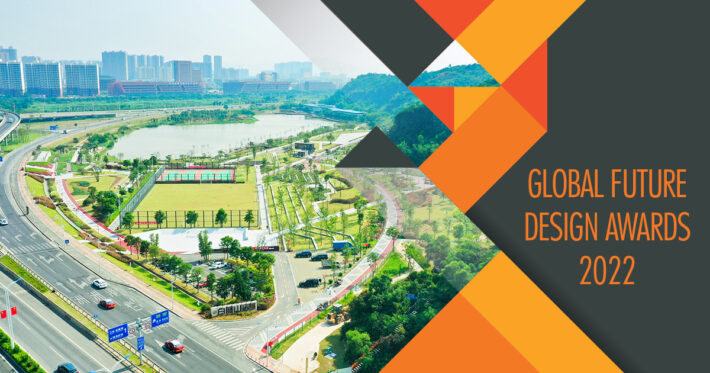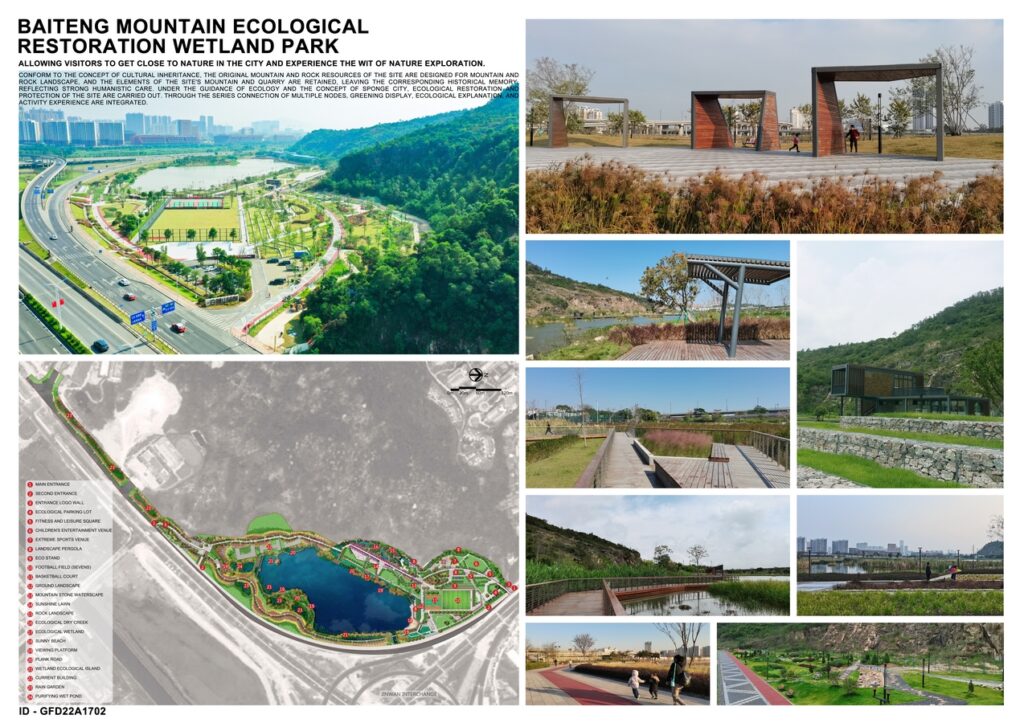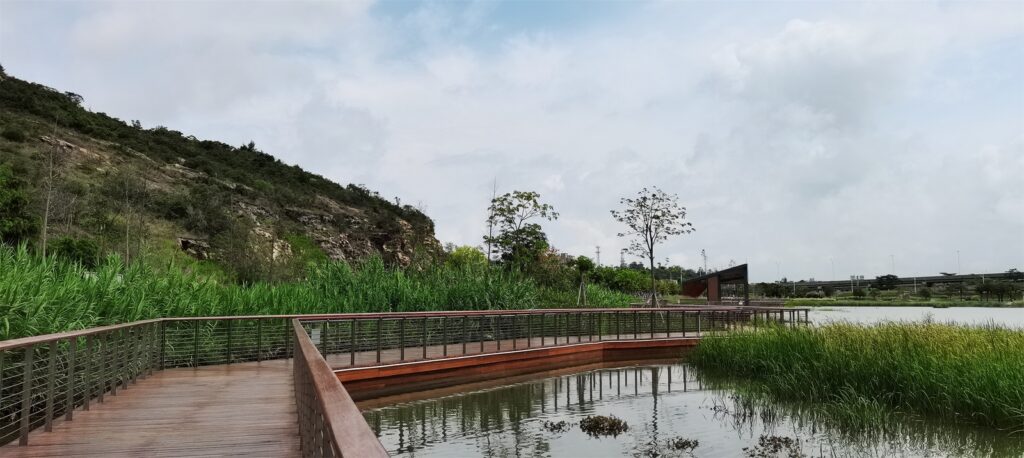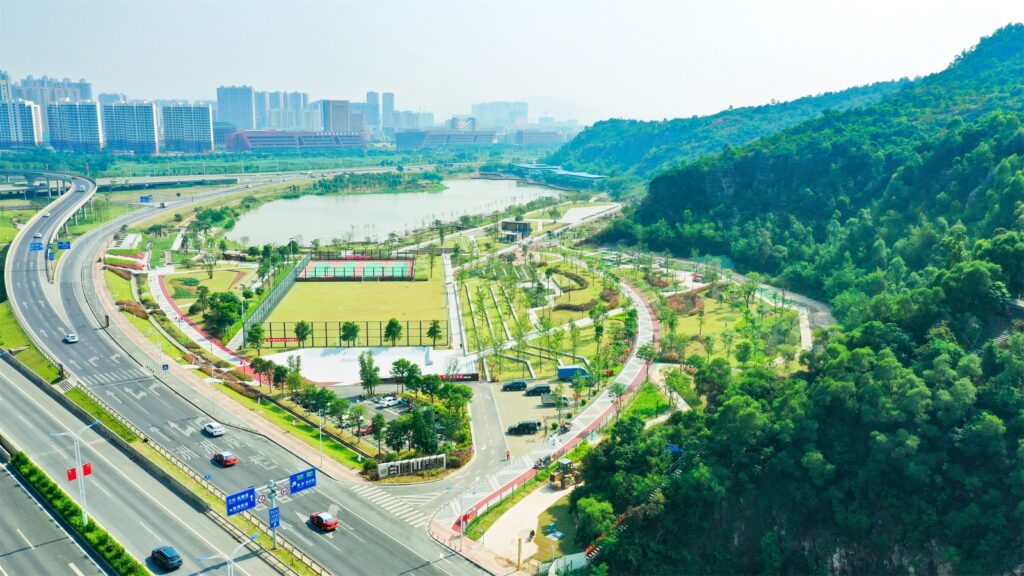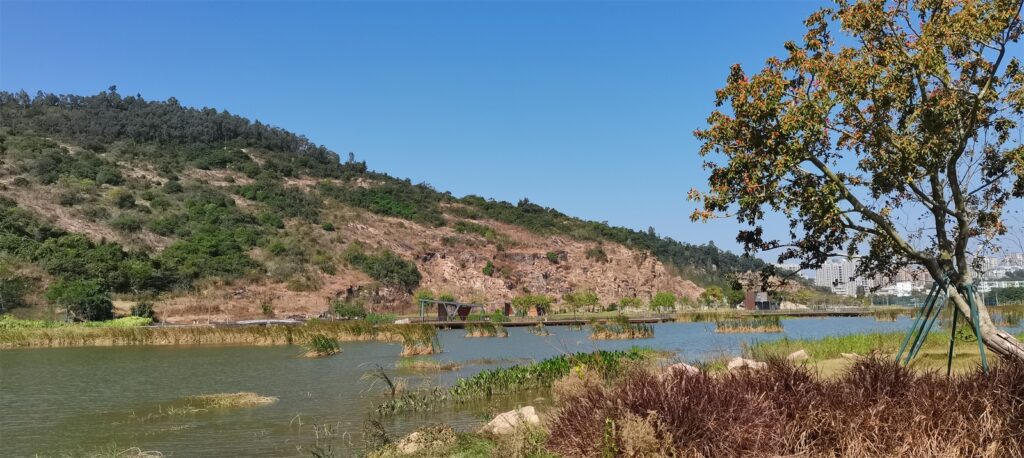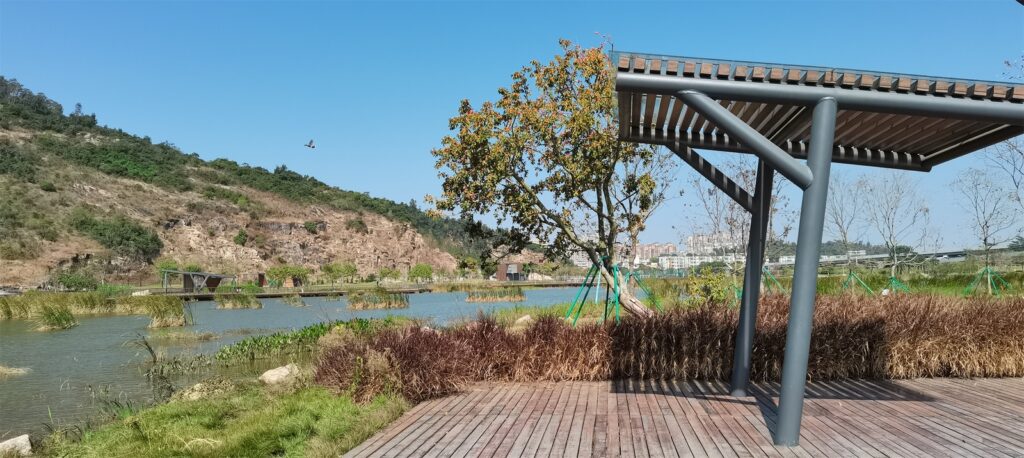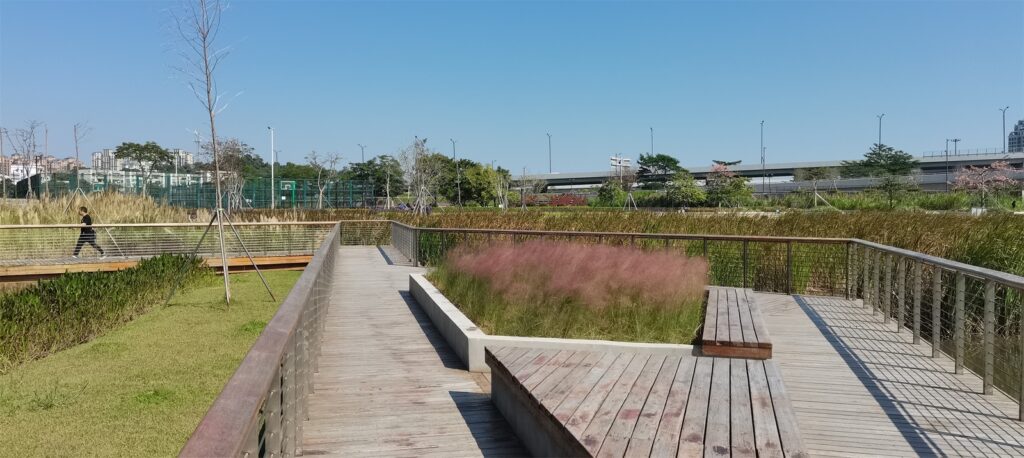It is surrounded by mountains and rivers and has a good ecological environment. It used to be a high-quality natural habitat. In the urban development, it became a quarry and later a prefabricated site for building materials. The mountain was damaged and hardened, and there were traces of quarrying and concrete everywhere.
Global Future Design Awards 2023: Entries Open!
Silver 🏆 Winner
Global Future Design Awards 2022
Baiteng Mountain Ecological Restoration Wetland Park
Public Landscape Architecture (Built)
Firm
SHANGHAI MUNICIPAL ENGINEERING DESIGN INSTITUTE(GROUP)CO.,LTD.
Architect/Designer
Yang Lili, Li Yaqun, Luo Qiang, Chen Jian
Design Team
Lv Yongpeng, Yuan Jiamei, Huang Wenjuan, Gao Yang, Liang Yongxian, Li Xinjian, Xu Lei
Location
Jinwan District, Zhuhai City
Country
China
Photographer/Copyright
©SHANGHAI MUNICIPAL ENGINEERING DESIGN INSTITUTE(GROUP)CO.,LTD.
Baiteng Mountain Ecological Restoration Wetland Park is located at the foot of Zhuhai Baiteng Mountain, connecting Zhuhai Jinwan and Doumen.
PROJECT CHALLENGE
On these foundations, how to return to the original source and combine the needs of modern cities with nature has become a problem we face. After analysis, the project has the following three challenges:
Ecological restoration-The mining and destruction of Baiteng Mountain for many years has caused a certain degree of damage to the mountain and the site. The hard bottoming of the site and the accumulation of waste materials have also brought great challenges to ecological restoration.
Utilization of the site-the site currently accumulates a lot of construction waste, gravel, etc., and the condition of the base concrete of the site is basically intact. After years of use, the site has a large elevation difference. On this basis, how to transform and reuse the existing materials, and how to digest the height difference of the site, and create a landscape effect, has become another major challenge for the project.
Rainwater management-How to manage rainwater in the site by designing sponge facilities in a limited and complex site to achieve control indicators is the third challenge of the project.
Facing the challenges of the project, what should we do?
DESIGN IDEAS
Conform to the concept of cultural inheritance, the original mountain and rock resources of the site are designed for mountain and rock landscape, and the elements of the site’s mountain and quarry are retained, leaving the corresponding historical memory, reflecting strong humanistic care. Under the guidance of ecology and the concept of sponge city, ecological restoration and protection of the site are carried out. Through the series connection of multiple nodes, greening display, ecological explanation, and activity experience are integrated.
DESIGN STRATEGY
How does the Baiteng Mountain Ecological Restoration Wetland Park integrate nature and the city?
We have sorted out three strategies: recycling + re-construction + flexible boundary.
“The accumulation of dust and dirt, water is formed by softness”. Combined with the design idea of sponge city, we effectively dredged the water body as the main element of the site.
FUNCTIONAL DIVISION
Combining the site relationship and functional requirements, the site is mainly divided into the following areas: entrance square area, vitality sports area, popular science recreation area, ecological garden area, site restoration area, and ecological green corridor area.
DESIGN FLOW
Rainwater Corridor: A series of sponge facilities are arranged according to local conditions to realize the regulation and storage of rainwater. The ecological dry streams, purified wet ponds, biological filter beds, biological retention zones, recessed green spaces, and rain gardens along the way form a circle of ecological science popularization streamlines.
Quiet Corridor: The ecological dry creeks, rock gardens and wetland plank roads arranged between the mountains and lakes create original ecological and wild landscapes, allowing visitors to get close to nature in the city and experience the wit of nature exploration.
ECOLOGICAL DRY CREEK
Ecological wetland:At night, the sound of frogs and insects, and the beams of lights that shine through the night, play a perfect movement.
Sports streamline: connecting open outdoor spaces such as courts, extreme sports areas, children’s play areas, and fishing platforms not only meet excising needs, but also can be flexibly converted according to the needs of surrounding schools and residents, as outdoor learning and leisure game space.
SPORTS FIELD
The gabion stage from recycling waste and the post station in the distance
Under the premise of preserving the memory of the existing site, a creative restoration and transformation has been carried out to add a touch of splendor to the site.
Garden Road: A multi-level amusement park trail, allowing people to stay in between, stop, rest, or walk.
The design is based on the principle of ecological restoration, and creative restoration and transformation are carried out on the premise of preserving the memory of the existing site. In the design, a large number of current materials are integrated into the site design, such as rocks, precast concrete blocks, gravel, and so on. The design of the sketch also uses stone cage stools, precast concrete stools, etc., to maintain unity with the overall style of the site.
Under the guidance of ecology, ecological restoration and protection of the site are carried out. The park uses vitality sports, popular science recreation, rock gardens, ecological wetlands, green corridors, dry creeks and other functional partitions to systematically layout and comprehensively display sponge facilities such as biological retention zones, biological filter beds, purified wet ponds, grass ditches, rainwater gardens, etc. The rainwater corridor with ecological science significance, the natural quiet corridor and the vitality sports area jointly create a wetland park that integrates ecological explanation, greening display, and activity experience.


